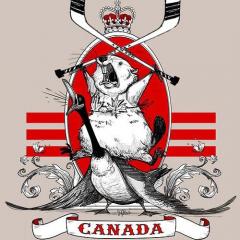-
Register/Login on Totallympics!
Sign up to Totallympics to get full access to our website.
Registration is free and allows you to participate in our community. You will then be able to reply to threads and access all pages.
If you encounter any issues in the registration process, please send us a message in the Contact Us page.
We are excited to see you on Totallympics, the home of Olympic Sports!
-
Posts
10,116 -
Joined
-
Last visited
-
Days Won
72
Reputation Activity
-
 intoronto reacted to Topicmaster1010 in Swimming
intoronto reacted to Topicmaster1010 in Swimming
3:55.37 for Summer McIntosh in the 400 free at the US Open. First competition back from illness and goes the 2nd fastest time in history.
-
 intoronto reacted to Surlympics in Ski Jumping
intoronto reacted to Surlympics in Ski Jumping
Abigail Strate wins silver in women’s large hill in Poland!
-
 intoronto reacted to Josh in Ski Jumping
intoronto reacted to Josh in Ski Jumping
5th for Abigail Strate in women’s large hill at the Lillehammer WC!
-
 intoronto reacted to hckošice in Ski Jumping FIS World Cup 2025 - 2026
intoronto reacted to hckošice in Ski Jumping FIS World Cup 2025 - 2026
Stage 4 in Wisla (POL)
Women´s Individual Large Hill:
1. Anna Odine Stroem 246.0
2. Abigail Strate 240.9
3. Nozomi Maruyama 236.9
Full Final Result HERE
-

-

-
 intoronto reacted to Surlympics in Freestyle skiing
intoronto reacted to Surlympics in Freestyle skiing
Naomi Urness sits first overall in big air qualifying. Who is she!!!
-
 intoronto reacted to Josh in Canada's 2026 Olympics Qualification Discussion
intoronto reacted to Josh in Canada's 2026 Olympics Qualification Discussion
Just a reminder, on December 7 at 9:45am PST is the mixed relay at the Skimo WC in Solitude, we need to finish ahead of US to make our Olympic debut in the sport.
-
 intoronto reacted to Topicmaster1010 in Speed skating
intoronto reacted to Topicmaster1010 in Speed skating
Connor Howe doesn't appear on the list of competitors for this weekend's world cup. Very concerning.
-
 intoronto got a reaction from Josh in Ice Hockey Discussion | Qualification to Winter Olympic Games Milano Cortina 2026
intoronto got a reaction from Josh in Ice Hockey Discussion | Qualification to Winter Olympic Games Milano Cortina 2026
https://www.sportsnet.ca/nhl/article/canadas-deboer-olympic-ice-expected-to-be-smaller-than-nhl-standard/
-
 intoronto got a reaction from Topicmaster1010 in Short Track Speed Skating Discussion | Qualification to Winter Olympic Games Milano Cortina 2026
intoronto got a reaction from Topicmaster1010 in Short Track Speed Skating Discussion | Qualification to Winter Olympic Games Milano Cortina 2026
Chinese media reported they earned 9 quotas, so this appears to be right.
-
 intoronto got a reaction from orangeman in Ice Hockey Discussion | Qualification to Winter Olympic Games Milano Cortina 2026
intoronto got a reaction from orangeman in Ice Hockey Discussion | Qualification to Winter Olympic Games Milano Cortina 2026
https://www.sportsnet.ca/nhl/article/canadas-deboer-olympic-ice-expected-to-be-smaller-than-nhl-standard/
-
 intoronto got a reaction from Gianlu33 in Rugby Sevens WR SVNS Series & World Championships 2026
intoronto got a reaction from Gianlu33 in Rugby Sevens WR SVNS Series & World Championships 2026
Limiting to 8 teams....is certainly a choice. Bizarre.
-
 intoronto got a reaction from Josh in Rugby Sevens WR SVNS Series & World Championships 2026
intoronto got a reaction from Josh in Rugby Sevens WR SVNS Series & World Championships 2026
Limiting to 8 teams....is certainly a choice. Bizarre.
-
 intoronto reacted to Topicmaster1010 in Team Canada at the Milano Cortina Winter Olympic Games 2026 News
intoronto reacted to Topicmaster1010 in Team Canada at the Milano Cortina Winter Olympic Games 2026 News
I now realize that there's a chance we may only get 4 men's quotas. Altogether, the sum of all short track quotas is 115 which is 3 athletes over the quota limit and some quotes will need to be cut. If the IOC decides to have an equal split per gender, then we would lose a quota since Canada is the lowest ranked men's relay that has 5 athletes qualified.
-
 intoronto reacted to Topicmaster1010 in Short Track Speed Skating Discussion | Qualification to Winter Olympic Games Milano Cortina 2026
intoronto reacted to Topicmaster1010 in Short Track Speed Skating Discussion | Qualification to Winter Olympic Games Milano Cortina 2026
2026 OLYMPIC QUOTAS
Men Women Mixed Quotas Nation 500m 1000m 1500m Relay 500m 1000m 1500m Relay Relay M Quotas W Quotas Total Australia 1 1 1 1 1 1 2 Austria 1 1 1 0 1 Belgium 1 1 1 x 1 1 2 x 4 2 6 Canada 3 3 3 x 3 3 3 x x 4 5 9 China 3 3 3 x 3 3 3 x x 5 4 9 Croatia 1 1 2 0 2 2 Czechia 1 0 1 1 France 2 2 1 2 2 x x 2 4 6 Great Britain 1 1 2 1 2 1 3 Hong Kong 1 1 1 1 1 2 Hungary 1 2 2 x 1 2 2 x 4 2 6 Italy 3 3 3 x 3 3 3 x x 4 5 9 Japan 2 2 3 x 2 3 3 x x 4 5 9 Kazakhstan 2 1 2 1 2 x 2 2 4 Korea 2 3 3 x 3 3 3 x x 5 5 10 Latvia 1 2 1 2 0 2 Netherlands 3 2 3 x 3 3 3 x x 5 5 10 Neutrals 1 1 1 1 1 1 2 Poland 2 2 2 2 2 2 x 2 3 5 Slovakia 1 0 1 1 Turkiye 2 2 0 2 Ukraine 1 1 1 1 1 2 United States 2 2 3 3 3 3 x x 3 5 8 Uzbekistan 1 1 0 1 Total 32 32 36 8 32 32 33 8 12 56 56 112
Before I continue, I just want to say that this may not actually be complete accurate. You might notice that there's only 33 quotas assigned in the women's 1500m. That's because after the initial assignment of quotas, there were 115 quotas which is 3 over the limit. According to the qualification system, the 1500m distances are the last events to assign quotas since they have a max quota of 36 instead of 32. For the men's event, France, Hungary, and Ukraine have the last spots and removing them wouldn't affect the quota totals. Therefore unfortunately, I had to remove one quota from Croatia, Hong Kong and Poland to get the total to 112. We'll see what the NOC does about all this. If anyone actually knows the correct procedures, please comment below.
Changes in Quotas from the last update:
Men's 500m:
No changes
Men's 1000m:
In: Hong Kong 1
Out: Ukraine 1
Men's 1500m:
In: Poland 2
Out: Great Britain 3
Men's 5000m Relay:
In: Hungary
Out: United States
Women's 500m:
In: Korea 3
Out: France 2
Women's 1000m:
In: Neutral Athletes 1, China 3
Out: Poland 3, Great Britain 1
Women's 1500m:
In: Kazakhstan 2, Belgium 2
Out: Great Britain 1, Latvia 1, Slovakia 1, Ukraine 1, Hong Kong 1
Full SOQC's Below:
Men's 500m
Men's 1000m
Men's 1500m
Men's 5000m Relay
Women's 500m
Women's 1000m
Women's 1500m
Women's 3000m Relay
Mixed 2000m Relay
*Only for teams with at least 2 men + 2 women
-
 intoronto got a reaction from Surlympics in 3x3 Basketball
intoronto got a reaction from Surlympics in 3x3 Basketball
Women win silver at the Americas 3x3 Championships. The Men finish fourth
-
 intoronto got a reaction from Topicmaster1010 in Team Canada at the Milano Cortina Winter Olympic Games 2026 News
intoronto got a reaction from Topicmaster1010 in Team Canada at the Milano Cortina Winter Olympic Games 2026 News
I seem to remember w never qualify a full team in every event, so this is good news.
-

-
 intoronto reacted to Topicmaster1010 in Team Canada at the Milano Cortina Winter Olympic Games 2026 News
intoronto reacted to Topicmaster1010 in Team Canada at the Milano Cortina Winter Olympic Games 2026 News
10 quotas have officially been secured in short track with 3 quotas per individual event and all the relays.
-
 intoronto reacted to Topicmaster1010 in Short Track Speed Skating
intoronto reacted to Topicmaster1010 in Short Track Speed Skating
Should mention that both William Dandjinou and Courtney Sarault won the crystal globes as the overall cup winners.
Canada won the crystal globe for the best overall team.
-
 intoronto got a reaction from Topicmaster1010 in Short Track Speed Skating
intoronto got a reaction from Topicmaster1010 in Short Track Speed Skating
Gold for Sarault in the women's 500! Bronze for Brunelle
-
 intoronto got a reaction from Josh in Short Track Speed Skating
intoronto got a reaction from Josh in Short Track Speed Skating
Gold for Sarault in the women's 500! Bronze for Brunelle
-
 intoronto got a reaction from Surlympics in Short Track Speed Skating
intoronto got a reaction from Surlympics in Short Track Speed Skating
Gold for Sarault in the women's 500! Bronze for Brunelle
-
 intoronto reacted to Topicmaster1010 in Short Track Speed Skating
intoronto reacted to Topicmaster1010 in Short Track Speed Skating
Silver for Courtney Sarault in the 1500m
-
Who's Online 8 Members, 0 Anonymous, 485 Guests (See full list)







